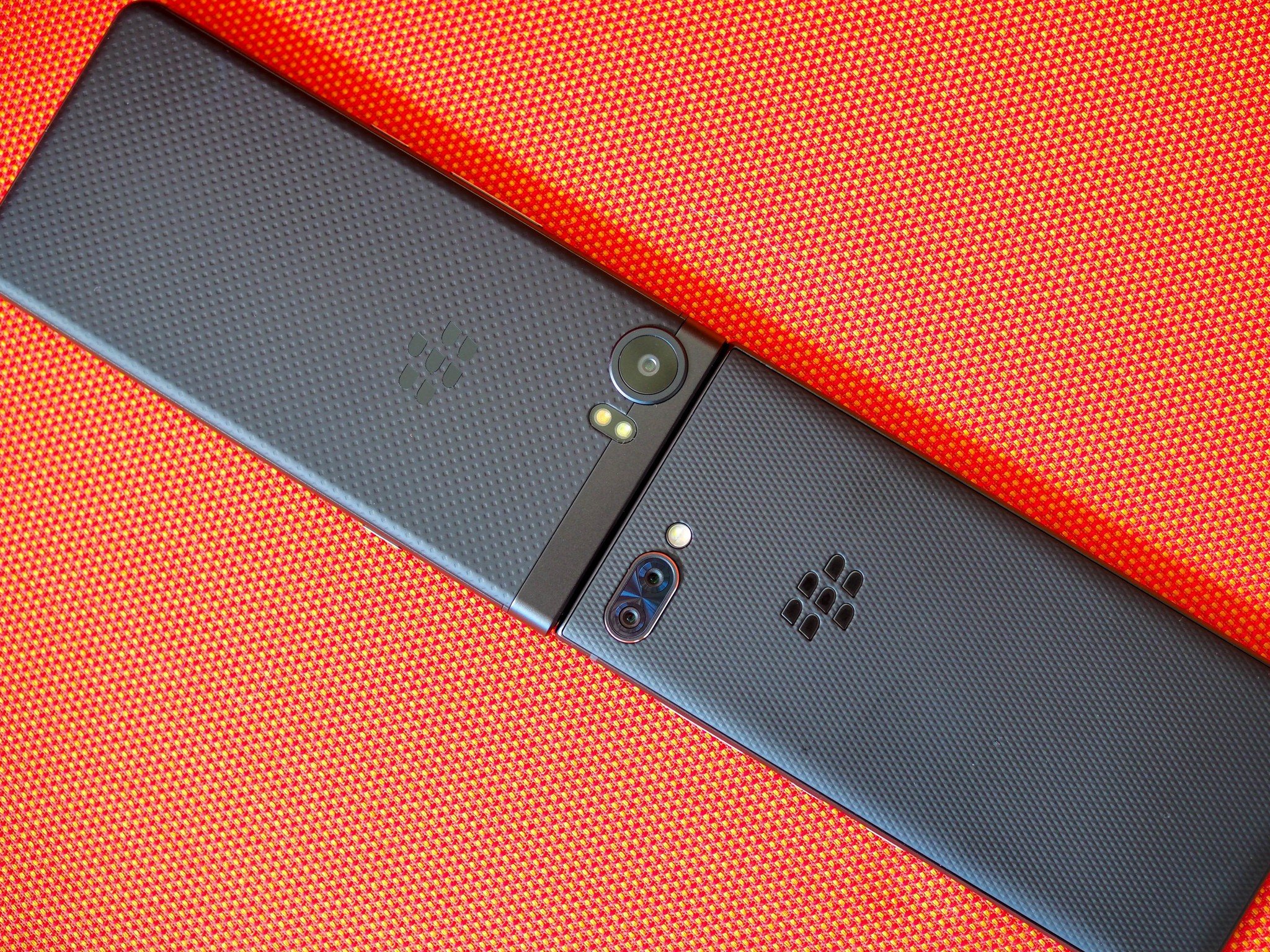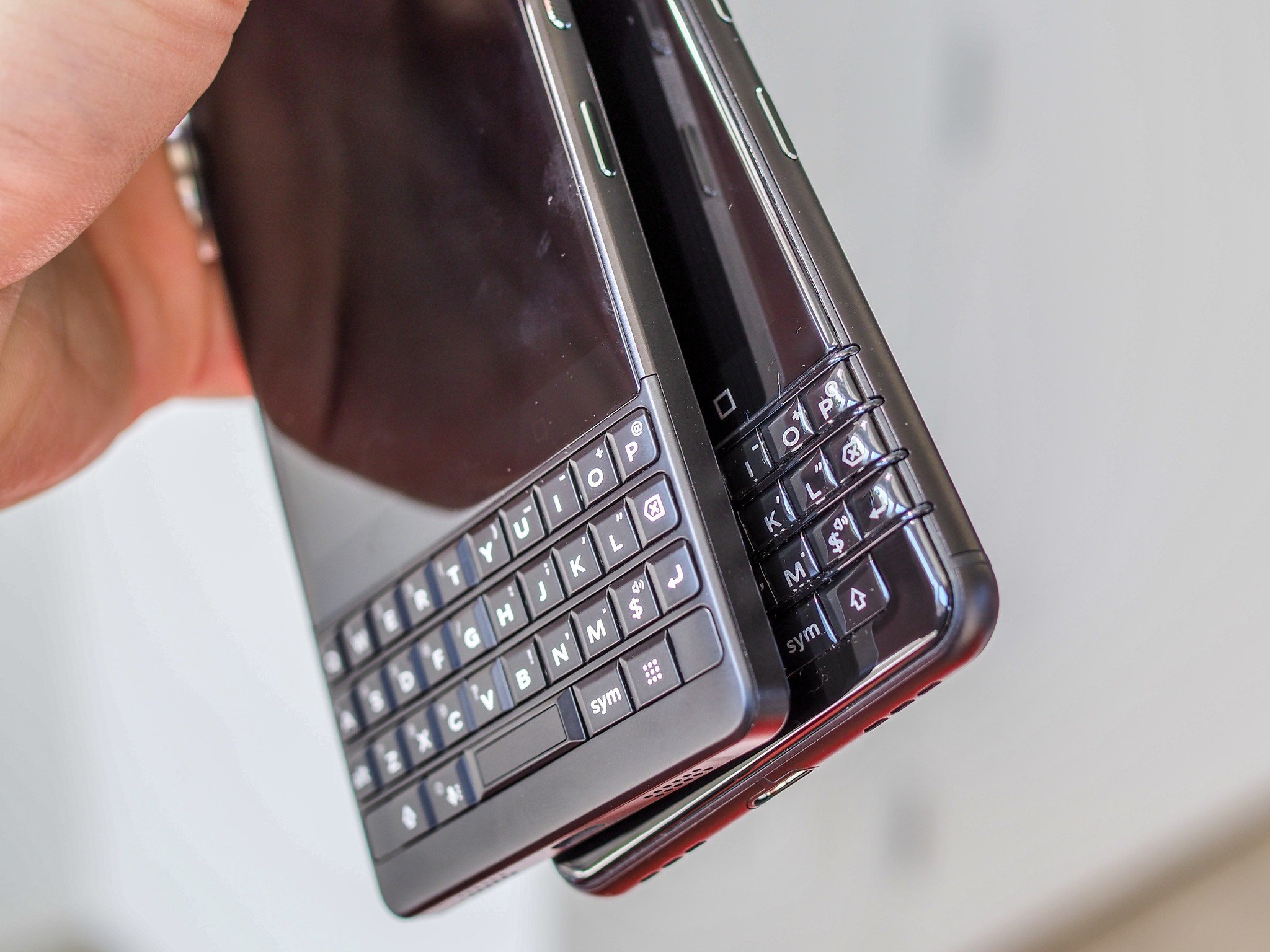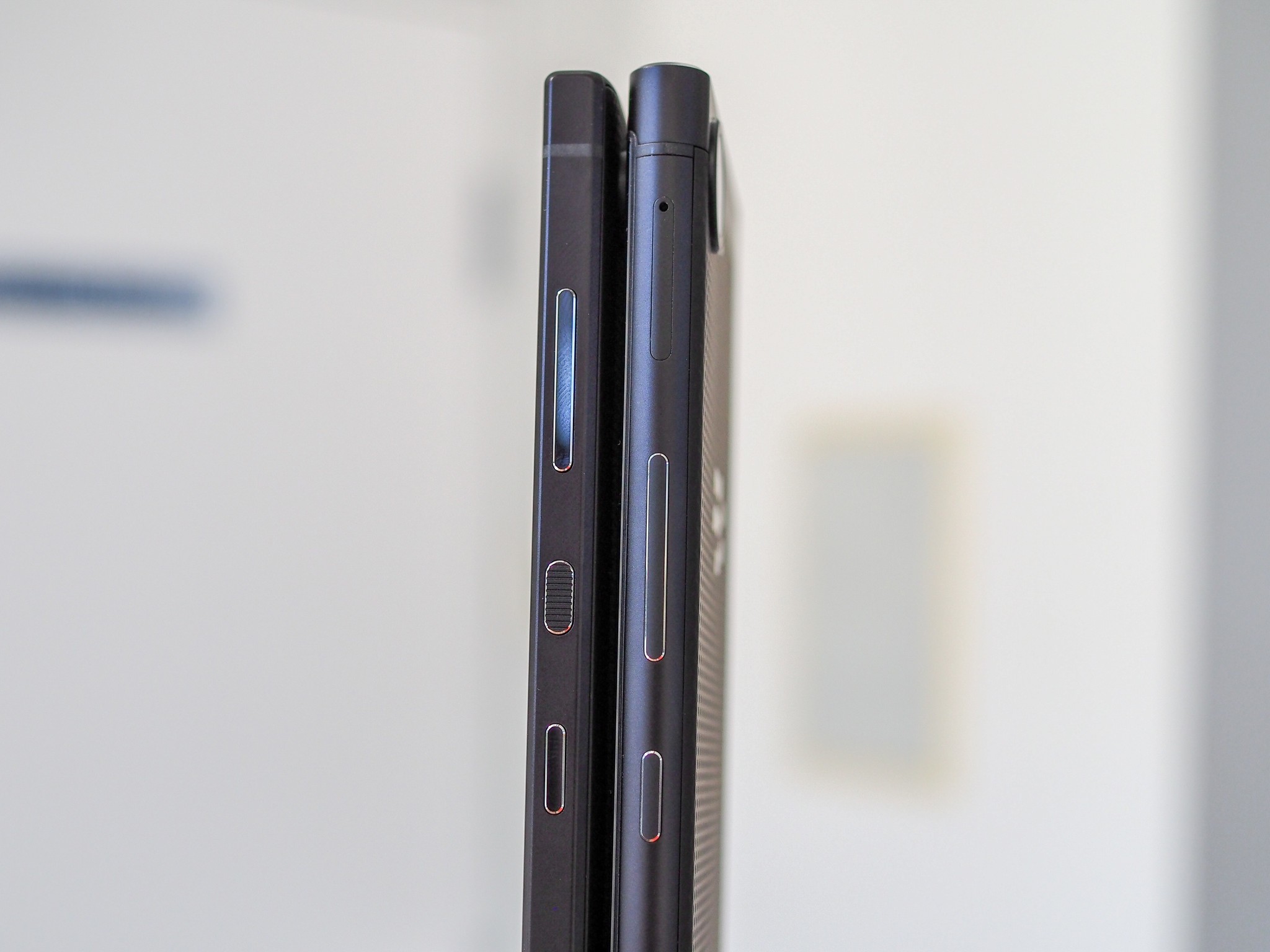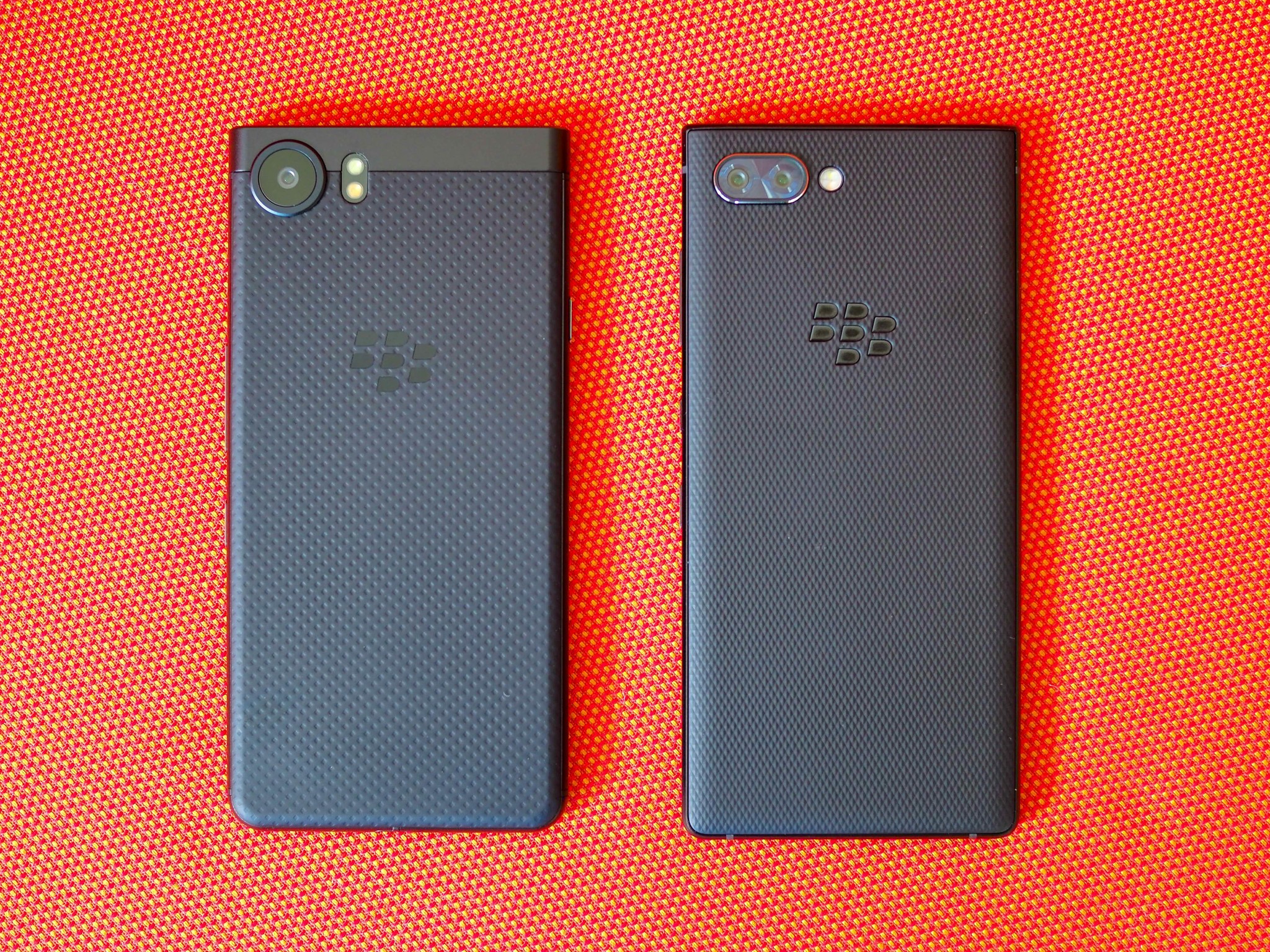The price you pay for loving KEY.
The BlackBerry KEY2 didn't have to overdeliver — it just had to deliver. Instead, BlackBerry Mobile listened to the complaints leveled against the first-generation KEYone and managed to address nearly every one of them. There's something to be said about that.
The KEY2's improvements are subtle but significant, and are uniformly applied — there isn't a single area of the phone that hasn't been affected in some way. At the same time, it's very much the physical and spiritual successor to the KEYone, and will likely attract a similarly-sized audience; when BlackBerry Mobile says it intends to grow the keyboard phone market with the KEY2, it's through evolution, not revolution.
KEY2 vs. KEYone What's the same?
The KEY2 maintains the original's 4.5-inch 1620x1080 pixel IPS display — and I'm not talking the same specs, I'm talking about the same exact display — which limits the phone to letterboxing while watching wide-angle content in landscape.
But that's part of the value proposition of a phone like this: it does things differently. BlackBerry Mobile says that no one, including its most hardcore fan base, complained about the screen, and lengthening it to 16:9, or trying to reduce bezel size, would have been problematic for both aesthetics and usability.
Some of the things that stayed the same were good. The capacitive buttons weren't.
What also hasn't changed over last year is the implementation of capacitive buttons. Again, BlackBerry doubled down on a set of conventions and stuck to them, saying that virtual keys would have forced them to rethink the display or chassis size, and it wanted the phone to be evenly weighted.
The use of capacitive keys isn't fundamentally problematic since Google isn't going to enforce a navigation change to gestures when upgrading to Android P, but it does somewhat limit the KEY2's upgradeability.
Both the KEYone and KEY2 share a textured back, making the phone easy to grip, and both sport headphone jacks, single downward-facing speakers, and USB-C fast charging.
| Category | KEY2 | KEYone |
|---|---|---|
| Operating System | Android 8.1 Oreo | Android 7.1 Nougat |
| Display | 4.5-inch, 1620x1080 IPS LCD 434 ppi | 4.5-inch, 1620x1080 IPS LCD 434 ppi |
| Processor | Qualcomm Snapdragon 660 4x Kryo 2.2GHz, 4x Kryo 1.8GHz Adreno 512 GPU | Qualcomm Snapdragon 625 Octa-core 2GHz Adreno 506 GPU |
| RAM | 6GB | 3GB |
| Storage | 64GB / 128GB | 32GB |
| Expandable | microSD up to 2TB | microSD up to 2TB |
| Rear Camera 1 | 12MP (1.3 micron) ƒ/1.8 laser+phase autofocus dual-tone LED flash | 12MP (1.55 micron) ƒ/2 phase autofocus dual-tone LED flash |
| Rear Camera 2 | 12MP (1 micron) ƒ/2.6 2x optical zoom portrait mode | n/a |
| Video | 4K @ 30fps, 1080p @ 60fps HDR | 4K @ 30fps, 1080p @ 60fps HDR |
| Front Camera | 8MP Selfie flash 1080p/30 video | 8MP Selfie flash 1080p/30 video |
| Battery | 3500 mAh Non-removable | 3505 mAh Non-removable |
| Charging | Quick Charge 3.0 USB-C | Quick Charge 3.0 USB-C |
| Water resistance | No | No |
| Headphone jack | Yes | Yes |
| Security | Front-facing fingerprint sensor (in keyboard) DTEK security suite FIPS 140-2 Full Disk Encryption Android For Work, Google Play for Work | Front-facing fingerprint sensor (in keyboard) DTEK security suite FIPS 140-2 Full Disk Encryption Android For Work, Google Play for Work |
| Connectivity | Wi-Fi 802.11 ac, 5GHz, Bluetooth 5 + LE, NFC GPS, GLONASS | Wi-Fi 802.11 ac, 5GHz, Bluetooth 4.2 LE, NFC GPS, GLONASS |
| Network (NA GSM) | LTE Band 1/2/3/4/5/7/8/12/13/14/17/20/28/29/30/66 TD-LTE Band 38/39/40/41 | LTE Band 1/2/3/4/5/7/8/12/13/17/19/20/28/29/30 TD-LTE Band 38/39/40/41 |
| Dimensions | 151.4 x 71.8 x 8.5 mm | 149.1 x 72.39 x 9.4 mm |
| Weight | 168 | 180g |
Both phones have roughly the same sized battery, too — 3,500mAh on the KEY2 and 3,505mAh on the KEYone — which should translate into more than a full day on both phones. We've already recounted the epic longevity of the original KEYone, with its battery-sipping Snapdragon 625 platform, and in our tests, the KEY2 performs just as well, if not better.
KEY2 vs. KEYone What's different?
Despite sharing much of the same core design, the BlackBerry KEY2 changes up a significant amount, both internally and externally, from the size of the keys on the eponymous keyboard to the heftier components that adorn the specifications sheet.
For starters, the Snapdragon 660 that powers the phone is more than double the speed, both in single- and multi-core tests, of the KEYone's Snapdragon 625. That phone was notorious for unwelcome slowdowns and stutters, and despite a fairly good reputation with other phones, the Snapdragon 625 is aging itself out these days.
The processor in the KEY2 is more than twice as fast as the KEYone, and it's going to be a big deal for performance.
Conversely, the S660 is newer, faster, and better-equipped to handle the considerable multitasking allotment that KEY2 owners are going to ask of the phone. In day-to-day use, the KEY2's performance is much more consistent than the KEYone's, and though I experienced a bit of slowdown, it wasn't enough to adversely affect my enjoyment of the phone.
BlackBerry KEY2 review: Just my type
Add to that the 6GB of RAM that comes standard in the KEY2 — double that of most KEYone models — and the newer phone has the potential to rival many flagships for overall peppiness. (It also does somewhat justify the $100 price bump over the original.)
The faster processor and RAM also support the new camera system. To accommodate a second camera — a 12MP sensor with an f/2.6 lens at twice the focal length of the main one — BlackBerry Mobile had to change out the primary sensor for a smaller one than was in the KEYone.
That particular camera, though not best-in-class by any means, boasted the same module as the first Google Pixel, which had the best camera of 2016. The sensor, a Sony IMX368, boasts 1.55-micron pixels, which affords better low-light photography, has been replaced by one of identical resolution Samsung ISOCELL module (the same one that was in the international Galaxy S8), with smaller 1.28-micron pixels. On paper, that's not a huge difference, but the KEY2's low light performance is considerably worse than the KEYone's, and somewhat counteracts its excellent daylight performance.
Of course, having a second sensor means the KEY2 can perform tricks the KEYone couldn't dream of, like portrait mode and, more useful, telephotography. The rear camera also boasts the ability to capture 1080p video footage at 60fps, an ability earned by the more powerful Snapdragon 660 processor.
There's something to be said for subtle improvements, like the size of the keyboard buttons.
The KEY2's design is considerably more modern-looking than the KEYone's, with angular brushed aluminum sides, a front boasting more integrated sensors, and less frustrating button placement, with the power button now located on the phone's right side nestled between the volume rocker and Convenience Key.
Looking at the two side-by-side reveals a number of small tweaks, too: the phone is ever-so-slightly taller and narrower, making it easier to paw one-handed, and it's around 8% lighter, too.
The keyboard keys, now matte instead of glossy, are 20% taller than those in last year's phone. The keys' size, and improved clickiness, are among the most important upgrades to the KEY2, and they're really good. In fact, this is the best BlackBerry keyboard I've ever used.
The newer phone also sports a Speed Key, which operates as a de facto shortcut key to anything the phone can do. It's located where the right-side Shift button is on the KEYone, and I can't say I'm going to miss the old design much.
KEY2 vs. KEYone Should you upgrade?
The KEY2 costs $649 USD and $829 CAD, and will be released in Canada on July 6 and the U.S. on July 13. It's $100 more than the KEYone, which is a bummer, but there's a lot of value here. Given the slow creep of phone costs in general, some price bump was expected, but $100 seems pretty sizeable. At the same time, the internal specs align much more with flagships we're seeing from Samsung, Huawei, LG, and others, and BlackBerry Mobile understands its demographic well enough to know that those willing to spend $550 on a KEYone will easily spend $650 on its successor. I mean, the Pixel 2 costs $650, as well.
Whether that successor is worth upgrading to, though, is not my decision to make. While we still don't know whether the KEY2 will be sold directly at U.S. carriers, the version that's coming supports both AT&T and T-Mobile; it doesn't seem like BlackBerry will be releasing a CDMA-compatible model at the moment. (There is a Verizon/Sprint-compatible KEYone, if you're interested in picking one up at a discount.)
If you love BlackBerry phones and were holding off buying a KEYone, the KEY2 will sate your hunger for a keyboard phone running Android. If you have a KEYone, you should probably wait until the company rolls out Android Oreo before deciding whether the KEY2 is a worthy upgrade, since there will be some inevitable software improvements coming to the older model. If you're in the larger camp that's loudly scoffed at BlackBerry's return — are you hate-reading this? — the KEY2 may not convince you to change your mind, but picking one up will offer a much better first impression either way.
from Android Central - Android Forums, News, Reviews, Help and Android Wallpapers https://ift.tt/2sUgsqP
via IFTTT




No comments:
Post a Comment